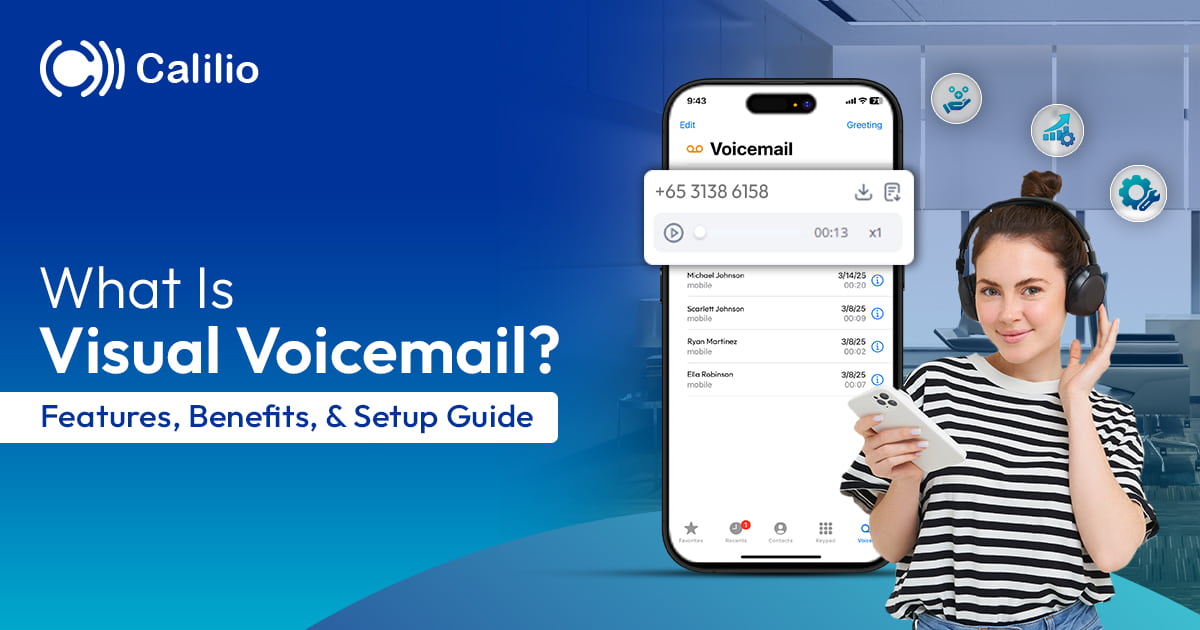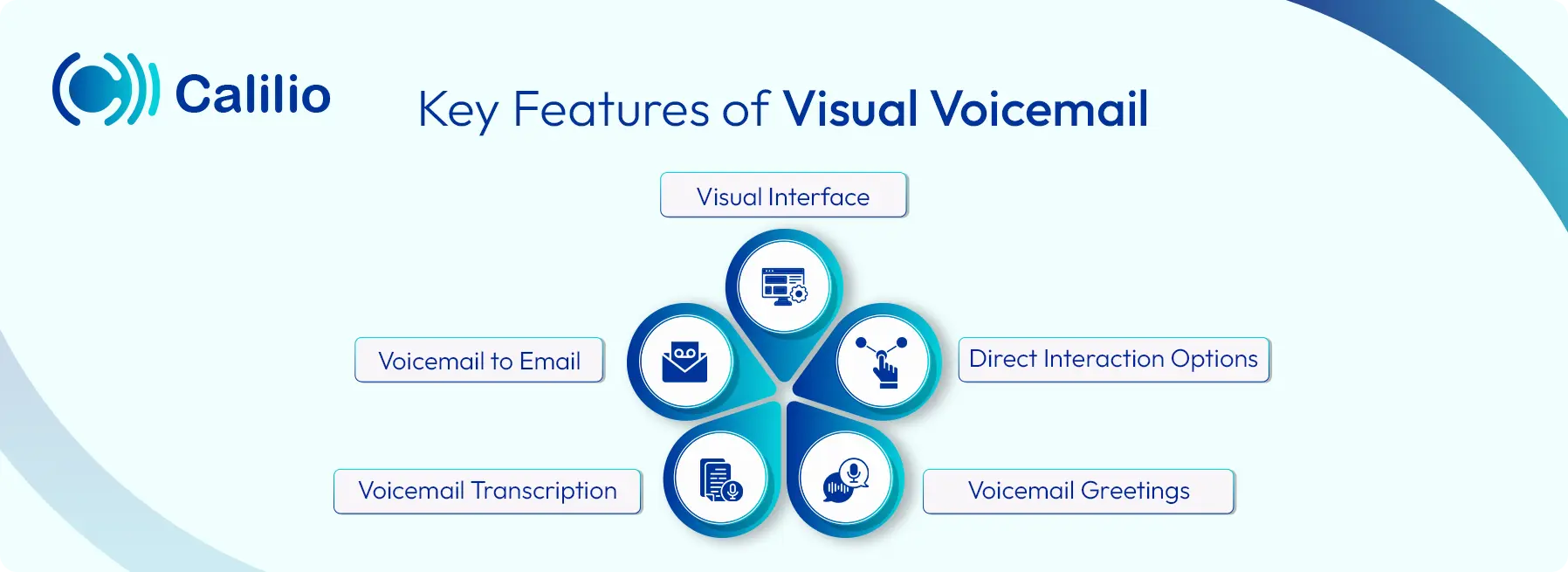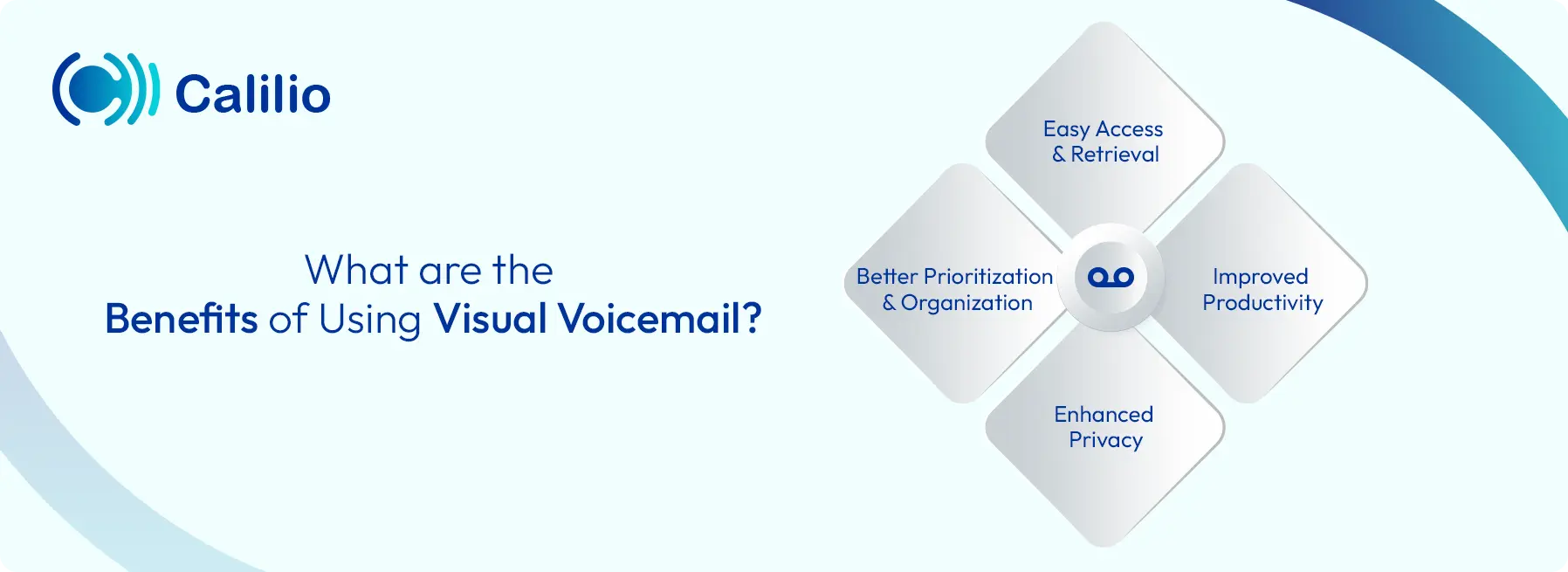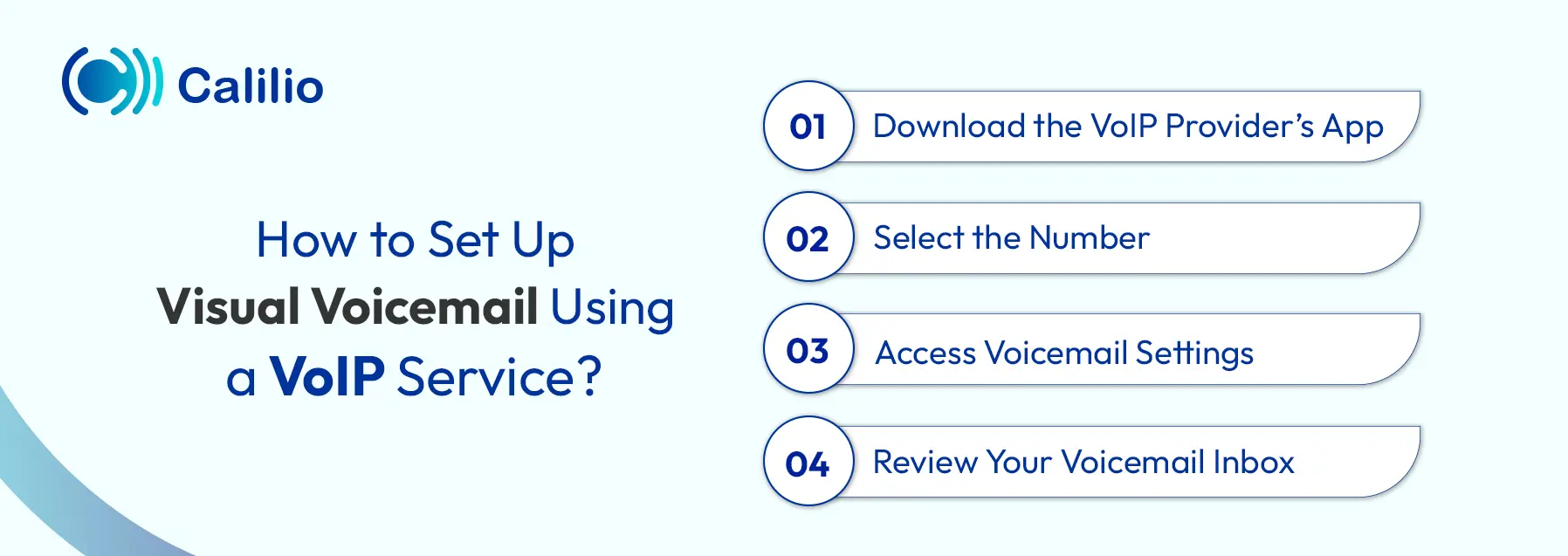What is Visual Voicemail and How to Set It Up for Your Business?

Traditional voicemail can be slow and insufficient. You have to dial in and listen to every message in order, and hope the important one comes early. If it doesn’t, you’re stuck wasting too much time.
This isn’t just inconvenient. For businesses, it can lead to missed opportunities, delayed responses, and lower team productivity.
Visual voicemail solves this by displaying your voicemail messages in a clean, organized list, with callers’ details, timestamps, and even transcripts. It allows you to quickly scan messages, prioritize, and respond to them based on their importance.
In this blog, we’ll explore what visual voicemail is in detail, including its key features, benefits, and setup process.
Keep reading!
Key Highlights:
Visual voicemail is a modern telephony feature that lets users manage voicemails through a clear visual list.
Visual voicemail settings organize messages and allow direct actions such as playing, forwarding, stopping, or sharing voicemails.
iPhones include built-in visual voicemail features for easy setup. However, Android phones do not have built-in visual voicemail, but users can access it through carrier apps or third-party apps.
You can access visual voicemail from anywhere, via mobile, desktop, or web, if supported by your service provider.
What is Visual Voicemail?
Visual voicemail is a voicemail feature that lets you access, view, and manage voicemail messages through a visual interface, instead of requiring you to dial and listen to the messages one by one.
Unlike traditional voicemail, which requires dialing a specific number to access voicemail and listening in order, visual voicemail shows messages in a convenient list. It allows users to quickly view key details, select specific messages to listen to, and manage their voicemails more efficiently.
Key Features of Visual Voicemail
The essential features of visual voicemail include a visual interface, interactive functionalities, voicemail transcription, and voicemail greetings. You can also forward voicemails to your email for easy access.

- Visual Interface: Organizes voicemails in a list with key details like caller information and timestamps.
- Direct Interaction Options: With direct interaction options, users can delete, save, or forward voicemails directly from the visual interface.
- Voicemail Greetings: Enables users to personalize their greeting when a caller leaves a voicemail.
- Voicemail Transcription: Converts voicemail audio to text, allowing users to quickly read messages without listening.
- Voicemail to Email: Forwards voicemail as audio files or texts to your email, allowing you to listen or review messages conveniently from your inbox.
Visual Voicemail vs. Traditional Voicemail System: Key Differences
Aspects Traditional Voicemail Visual Voicemail Access Method Order Interaction Method Visual Interface ConvenienceThe recipient needs to call a specific number to access the voicemail inbox. The recipient can easily access it through the phone app or any designated app for visual voicemail. Messages are played one by one in the order they were received. You can’t skip the unwanted ones. Received voicemails are listed with their details, and users can choose the one they want to listen to. User follows the voice prompts and uses the keypad to delete, save, or replay messages. Users can just tap to listen, delete, save, or return calls directly. It has no visual interface; it provides only voice prompts. It provides a visual list of voicemails. It’s less convenient as it requires manual navigation and is time-consuming. It allows easy management and access, and is more convenient.
What are the Benefits of Using Visual Voicemail?
Visual voicemail offers easy access to messages through a simple list, saving time by allowing you to quickly scan and prioritize urgent messages. It enhances productivity and privacy, letting you discreetly read or listen to transcriptions while keeping your voicemail organized.

- Easy Access and Retrieval: You can instantly see all your messages in a list. You can access any message with a single tap, without having to listen to previous ones.
- Improved Productivity: By allowing you to scan for urgent messages or read transcriptions, visual voicemail saves you time. You can quickly get the information you need without having to dial each number individually.
- Enhanced Privacy: Instead of playing voice messages out loud, you can simply read them on your screen just like checking a text or email. This is especially useful in offices, meetings, or public places.
- Better Prioritization and Organization: The visual list lets you see who called and when, allowing you to prioritize which messages you need to address first. Plus, you can easily save or delete messages with a quick tap, keeping your inbox organized.
How to Set Up Visual Voicemail?
You can set up visual voicemail directly through the built-in settings on your device. If the feature isn’t available by default on your device, you can also use third-party voicemail apps or a VoIP service that includes visual voicemail.
How to Activate Visual Voicemail on an iPhone?
To set up visual voicemail on an iPhone, simply activate the voicemail on your device. The system automatically activates visual voicemail once you activate voicemail on your iPhone.
Here’s how you do it:
- Open the Phone app. Tap on the Voicemail tab on the bottom right.
- If you’re setting up voicemail for the first time, tap "Set Up Now"
- For new voicemail users: Create a voicemail password, re-enter it to confirm, and tap Done.
- For existing voicemail users: Enter your password, tap Done, re-enter the password, and tap Done again to confirm.
- Follow the prompts to set up your voicemail greeting and complete the voicemail setup.
- Once voicemail is activated, visual voicemail is set up automatically.
After completing the setup, any new messages will appear in the Phone app as visual voicemail. You’ll be able to see a complete list of received voicemails, including details such as the date, time, message length, and caller's name.
How to Activate Visual Voicemail on Android?
Many Android phones come with a built-in visual voicemail feature. However, if your carrier doesn't support this feature, you can set it up using your carrier’s visual voicemail service.
Using Built-in Visual Voicemail
Many Android phones, like those from Samsung, come with pre-installed visual voicemail settings. Here’s how to activate visual voicemail service on Android using your device’s built-in functionality:
- Open the Phone App: Tap the “Visual Voicemail” icon (usually found in the app’s menu).
- Grant Permissions: Allow necessary permissions for the app to access your voicemails.
- Set a Voicemail Password: If prompted, create or confirm your voicemail password.
- Personalize Your Greeting: Choose from a default, recorded, or custom greeting.
Using Carrier Visual Voicemail Apps:
Many mobile carriers like Verizon and T-Mobile provide dedicated visual voicemail apps. If your carrier offers these apps, you can simply install the app, configure the settings, and activate it on your device.
For example, here’s how to activate visual voicemail with T-Mobile:
- From the Home Screen, swipe up to open the menu.
- In the call settings section, select the Visual Voicemail.
- Then, select or record a personal greeting for callers.
- Complete the setup, following the prompt instructions.
How to Set Up Visual Voicemail Using a VoIP Service?
If your phone or carrier doesn’t support built-in visual voicemail, you can use a visual voicemail service from a VoIP provider to manage your messages.
To set up visual voicemail on your VoIP service, download your service provider’s VoIP app, access the Voicemail settings, and activate the visual voicemail feature.
Though the exact process may vary depending on the service providers, the general steps would be:

- Download the VoIP Provider’s App: If your provider offers visual voicemail via a dedicated app, install it from your device’s app store.
- Select the Number: Open the app, navigate to Settings, and choose the VoIP phone number you want to enable visual voicemail for.
- Access Voicemail Settings: Enable visual voicemail by locating the Voicemail or Call Handling setting in the settings menu.
- Review Your Voicemail Inbox: Once set up is completed, you'll see your virtual voicemail with a list of messages and options to play, stop, forward, delete, or choose which message to listen to first.
Conclusion
Visual voicemail is a modern telephony feature that transforms how we manage and access voicemail messages. It allows you to view, listen to, and organize voicemails through a simple visual interface.
Frequently Asked Questions
Do I need visual voicemail?
Yes, you need a visual voicemail service to manage your messages more efficiently. If you’re someone who’s likely to receive a high volume of voicemails, then it’s better to use a visual voicemail.
How much does visual voicemail cost?
How secure is visual voicemail?
Can I access visual voicemail from anywhere?

Still have questions?
Can’t find the answer you’re looking for? Please chat with our friendly team.
Stay in the loop
Get the latest call insights, trends, and updates delivered straight to your inbox.
By subscribing, you agree to receive updates from Calilio.
You can unsubscribe anytime.


